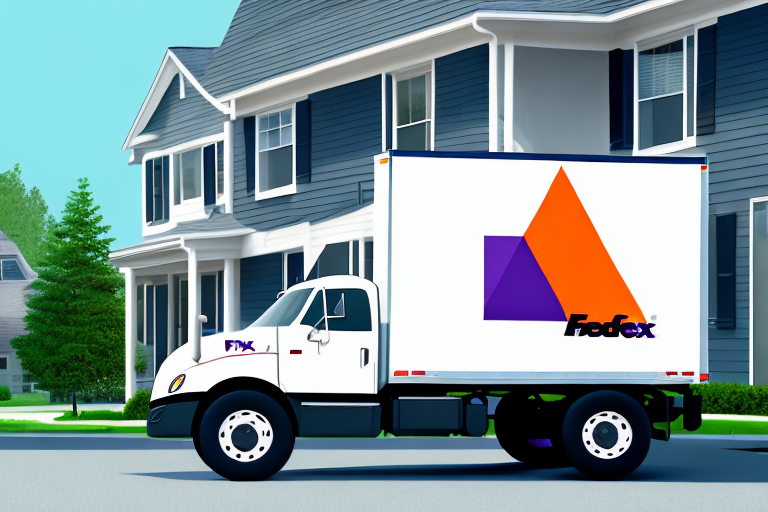Understanding Residential Delivery Fees
FedEx is one of the largest courier delivery services in the world, offering a wide range of shipping options from international to domestic, and handling everything from small to large packages. However, regular customers might notice that shipping to residential addresses incurs higher fees compared to commercial deliveries. This difference in cost can be attributed to various factors and challenges associated with residential deliveries.
The Challenges of Residential Deliveries
Access and Navigation
Residential areas often feature narrower streets and limited access points, making it more difficult for delivery vehicles to navigate and park. This can lead to longer delivery times and multiple delivery attempts, both of which increase operational costs.
Limited Loading and Unloading Facilities
Unlike commercial areas that typically have designated loading zones, residential neighborhoods lack such facilities. Delivery drivers may have to park illegally or circle around to find a suitable spot, potentially resulting in fines and delays. Additionally, the absence of loading docks means packages must be carried further distances, increasing the time and effort required for each delivery.
Specific Delivery Hours
Deliveries to residential areas often need to be scheduled during specific hours when residents are available. This requirement can limit delivery windows and necessitate multiple attempts if the recipient is unavailable, further driving up costs.
Factors Affecting Shipping Costs
Distance and Fuel Prices
The distance between the sender and the recipient plays a significant role in determining shipping costs. Longer distances result in higher fuel consumption and increased transportation expenses. According to the Bureau of Labor Statistics, fluctuating fuel prices directly impact delivery costs.
Package Weight and Size
FedEx charges based on the actual weight or the dimensional weight of the package, whichever is greater. Dimensional weight takes into account the package's size, meaning bulky but lightweight packages can incur higher fees. Accurately measuring and weighing packages can help avoid unexpected costs.
Customs Regulations
International shipments are subject to destination country customs regulations. Restricted or prohibited items can lead to additional fees, delays, or even the return of packages. It's crucial to research and comply with the customs requirements of the destination country to mitigate these risks.
Residential vs. Commercial Delivery
Process Differences
Commercial deliveries are generally straightforward, targeting businesses with consistent and predictable shipping needs. These deliveries often involve larger packages and occur during regular business hours, facilitating efficient drop-offs.
Cost Implications
Due to the streamlined nature of commercial deliveries, the cost per delivery is typically lower. Drivers can handle multiple packages en route to various business locations, optimizing their routes and reducing the number of stops.
Cost Components in Residential Delivery
Last Mile Delivery
The "last mile" refers to the final leg of the delivery process from a local hub to the destination address. This segment is the most expensive due to factors like traffic congestion, variable delivery routes, and the need for personalized delivery attempts.
Additional Fees
Beyond base shipping rates, residential deliveries may include surcharges for services such as signature requirements, oversized packages, or special handling. These additional fees ensure the safe and reliable delivery of packages but contribute to overall shipping costs.
Strategies to Reduce Shipping Costs
Negotiating Shipping Rates
Regular users of FedEx services can negotiate better rates based on shipping volume and frequency. Engaging with FedEx representatives to discuss discount options can lead to substantial savings.
Using Package Consolidators
Package consolidators or shipping aggregators combine multiple deliveries into a single shipment. This approach reduces the number of individual deliveries, thereby lowering overall shipping fees.
Alternative Delivery Methods
Innovative delivery solutions such as drones and autonomous vehicles offer the potential to decrease last-mile delivery costs by reducing reliance on human drivers and minimizing fuel consumption. While promising, these technologies are still subject to regulatory and technical challenges before widespread adoption.
Future Trends in Residential Shipping
Technological Advancements
The shipping industry is increasingly embracing automation and artificial intelligence to enhance efficiency. Autonomous delivery vehicles and smart logistics systems are expected to revolutionize residential delivery, making it faster and more cost-effective.
Environmental Considerations
With growing emphasis on sustainability, shipping companies are investing in eco-friendly practices. Electric delivery vehicles and optimized routing algorithms aim to reduce the carbon footprint of residential deliveries while maintaining cost-effectiveness.
Conclusion
Shipping to residential areas typically costs more due to the unique challenges and additional expenses involved. Factors such as distance, package size, and specific delivery requirements contribute to higher fees. However, by implementing strategies like negotiating rates, utilizing package consolidators, and adopting innovative delivery methods, businesses can effectively manage and reduce shipping costs. Balancing cost management with customer satisfaction is essential for ensuring the successful delivery of products to residential customers.






















